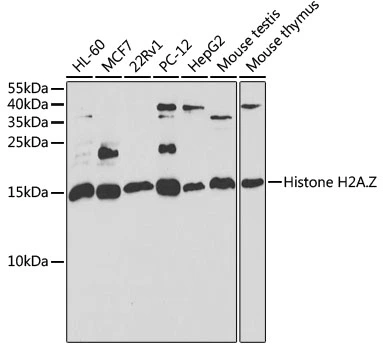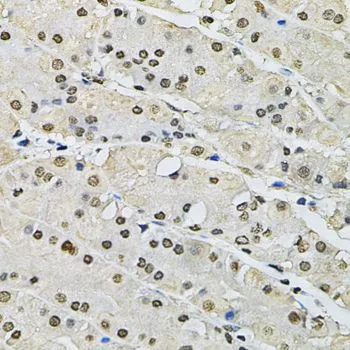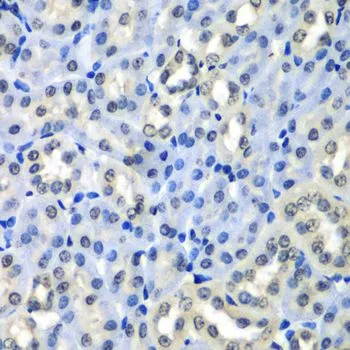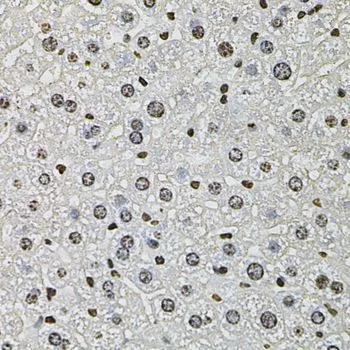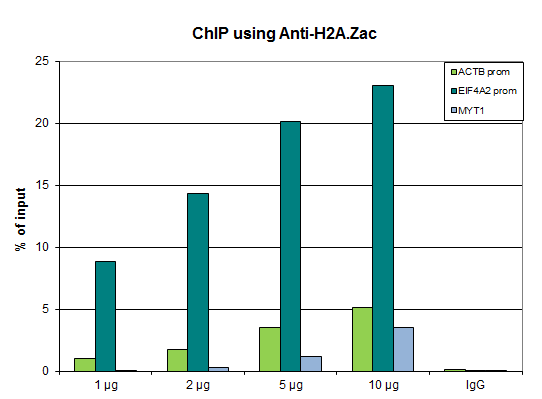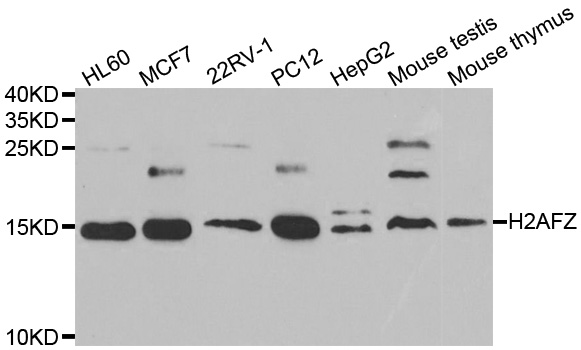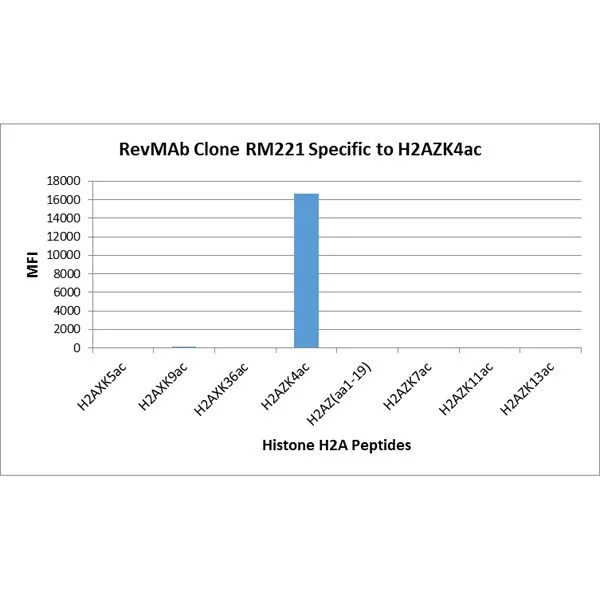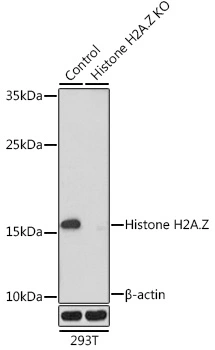
WB analysis of normal (control) and knockout (KO) 293T cell lysate using GTX33241 Histone H2A.Z antibody. Dilution : 1:1000 Loading : 25microg per lane
Histone H2A.Z antibody
GTX33241
ApplicationsWestern Blot, ImmunoHistoChemistry, ImmunoHistoChemistry Paraffin
Product group Antibodies
ReactivityHuman, Mouse, Rat
TargetH2AZ1
Overview
- SupplierGeneTex
- Product NameHistone H2A.Z antibody
- Delivery Days Customer9
- Application Supplier NoteWB: 1:500 - 1:2000. IHC-P: 1:50 - 1:200. *Optimal dilutions/concentrations should be determined by the researcher.Not tested in other applications.
- ApplicationsWestern Blot, ImmunoHistoChemistry, ImmunoHistoChemistry Paraffin
- CertificationResearch Use Only
- ClonalityPolyclonal
- ConjugateUnconjugated
- Gene ID3015
- Target nameH2AZ1
- Target descriptionH2A.Z variant histone 1
- Target synonymsH2A.Z-1, H2A.z, H2A/z, H2AFZ, H2AZ, histone H2A.Z, H2A histone family member Z, H2AZ histone
- HostRabbit
- IsotypeIgG
- Protein IDP0C0S5
- Protein NameHistone H2A.Z
- Scientific DescriptionHistones are basic nuclear proteins that are responsible for the nucleosome structure of the chromosomal fiber in eukaryotes. Nucleosomes consist of approximately 146 bp of DNA wrapped around a histone octamer composed of pairs of each of the four core histones (H2A, H2B, H3, and H4). The chromatin fiber is further compacted through the interaction of a linker histone, H1, with the DNA between the nucleosomes to form higher order chromatin structures. This gene encodes a replication-independent member of the histone H2A family that is distinct from other members of the family. Studies in mice have shown that this particular histone is required for embryonic development and indicate that lack of functional histone H2A leads to embryonic lethality. [provided by RefSeq, Jul 2008]
- ReactivityHuman, Mouse, Rat
- Storage Instruction-20°C or -80°C,2°C to 8°C
- UNSPSC12352203

